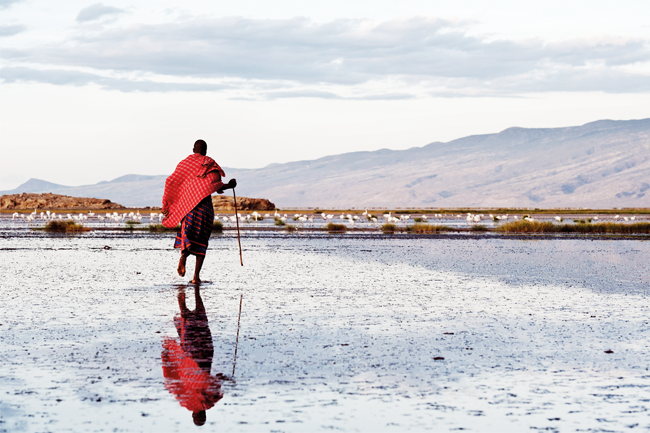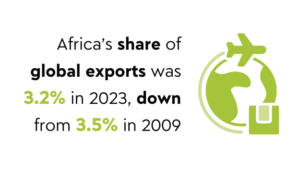Since being elected Tanzania’s president in October last year, John Magufuli has been making the right kind of waves. The offshore natural gas finds in early 2012 were a game-changer for the development of the country, and Magufuli’s drive for good governance may well be the second element needed to take Tanzania’s progress up a level.
Magufuli has cut though corrupt and bloated government institutions – not for nothing was the former industrial chemist nicknamed ‘Bulldozer’ when he headed up the Department of Works under the previous Kikwete presidency. He started by slashing the budget for the opening of Parliament (some of the money saved went towards beds for Muhimbili national hospital in Dar es Salaam).
He told parliamentarians he’d been elected ‘to solve problems, not make speeches’, which he confirmed by suspending the nation’s Independence Day celebrations, instead inviting citizens to join him in cleaning up their localities. A few years prior, the celebration had reportedly cost TZS64 billion, much of it spent on moving government employees to events around the country.
Magufuli reduced his cabinet from the existing 31 ministers to just 19. He sacked the top brass at the notoriously inefficient Tanzanian Ports Authority, cracked down on tax evasion, fired the country’s tax commissioner, conducted surprise inspections of a number of ministries and has pared foreign travel for government officials to the bone (the delegation to 2015’s Commonwealth summit in Malta was cut from the original 50 delegates to four). These sorts of measures, threatening to entrenched elites and a delight to ordinary Africans, spurred one blogger to say that Magufuli has turned Tanzania into ‘the coolest kid on the African block’.
It’s certainly the right time for such a makeover, as Tanzania has reached a crossroads. For several years, the country has seen growth rates of 6% to 7% but the recent discovery of large quantities of natural gas has the potential to make Tanzania one of the real star economic performers in sub-Saharan Africa. Norwegian firm Statoil estimates the nation’s natural gas reserves to be 55 Tcf, meaning it could become a medium-size industry player. The question is how to develop or, in the jargon of the industry, ‘monetarise’ the asset.
Some is going directly into power generation, with a gas-fuelled electricity generation plant in Tanzania’s plans. Recent figures suggest a total nationwide electricity production of 1 500 MW, a mere 4% of South Africa’s. But Magufuli plans to bring 3 000 MW on-stream within five years.
This is already under way, with the first phase of the 300 MW Kinyerezi power plant going on-line last year, albeit somewhat behind schedule – the leader will need to crack the whip on this and other renewable energy projects elsewhere in Tanzania.
More importantly, however, is a final decision on a gas-to-liquid fuel plant for the country. Such plants are huge investments – figures of around US$15 billion (nearly one-third of Tanzania’s GDP) have been bandied about – and are now the established way of exporting gas to markets that are too far away to be reached by pipeline.
Some see Tanzania’s southern neighbour – Mozambique (which is also sitting on large, recently-discovered natural gas reserves) – as a deadly rival. Mozambique is much further down the road to facilitating the construction of a liquid natural gas plant, and there are well-founded concerns that present market conditions won’t allow space for more than one such investment in the region.
Tanzania is a late convert to the virtues of capitalism. Under its long-serving first president, the revered Julius Nyerere, the country pursued a concept of ethical African socialism – in a domestic form called ‘Ujamaa’ (kiSwahili for ‘familyhood’) – from 1961 to the mid-1980s.
Indeed, Tanzania seemed to many to be a standard bearer for the idea of a ‘third way’, between Western capitalism and Soviet-style state socialism. But as an economic policy, Ujamaa, with its all-embracing state ownership and forced agricultural collectivisation, failed.
By the time Nyerere resigned in 1985, Tanzania was one of the poorest countries in the world.
Nyerere’s successors have liberalised and allowed the market back in. Agriculture and agroprocessing ventures, especially in sugar and tobacco, are private-sector led. And while the privatisation of the parastatal banking sector was difficult (with accusations of asset stripping), financial services is now a major growth sector, and nearly half is foreign owned.
Since the 1980s, Tanzania has emerged from almost nowhere to become the continent’s third-biggest gold producer (behind South Africa and Ghana), thanks to the enormous opencast mines opened by Anglogold Ashanti (Geita) and African Barrick Gold (Buzwagi) in the 1990s.
While the economy still has a long way to go – Tanzania was ranked a lowly 193 in terms of income per capita in 2014 by the CIA World Factbook – the socialist era, which appeared to be such a dead end only a few years ago, turns out to have delivered some very important building blocks for development.
The so-called tribal divisions that bedevil neighbouring Kenya have never been allowed to develop in Tanzania. The country claims around 130 ethnic groups, none of them large enough to come anywhere near ruling alone, or even provide a particularly strong base of political mobilisation.
In any case, Tanzania has a single national language, kiSwahili, originally the lingua franca of the Arab trading coast. Policy since the 1960s has been to achieve near-universal literacy, especially in the national language.
National identity was fostered by deliberately transferring learners and teachers to schools outside their home areas.
Power brokers in most African societies – traditional leaders – were abolished and replaced by administrators who answer to the state. As a result, Tanzania is one of the few African nations neither threatened by secessionist regional interests or ‘ethnic’ cleavages.
The great exception is the island and tourist idyll of Zanzibar. The almost entirely Muslim island was only incorporated into Tanzania in 1964, and has harboured separatist ambitions.
It has its own constitution and has always elected a separate president who is, in practice, subordinate to the president of Tanzania as a whole. However, Zanzibar’s 2015 elections were annulled after widespread irregularities.
The heat generated by these elections reflects the greater competitiveness of party politics in Tanzania.
Since independence, the country has only ever been ruled by one party – Chama Cha Mapinduzi, originally called the Tanganyika African National Union and re-branded after absorbing Zanzibar’s ruling party, the Afro-Shirazi Party, in 1977.
Multi-party elections were allowed for the first time after 1992. In the 2015 presidential election, the opposition put up its best showing ever, garnering nearly 40% of the vote. This is another dynamic Magufuli is going to need to ride.
The entrenchment of a single political party – now the longest ruling such entity in Africa – and the effective fusion of party and state in the socialist era are a double-edged inheritance.
Tanzania’s state development has created perhaps the most coherent sense of national identity on the continent, Zanzibar apart. But it has also bred complacency and corruption.
Magufuli has made an impressive start and if he succeeds in carrying his reforms through, Tanzania may emerge as the first of the long-anticipated ‘African Lions’.
















